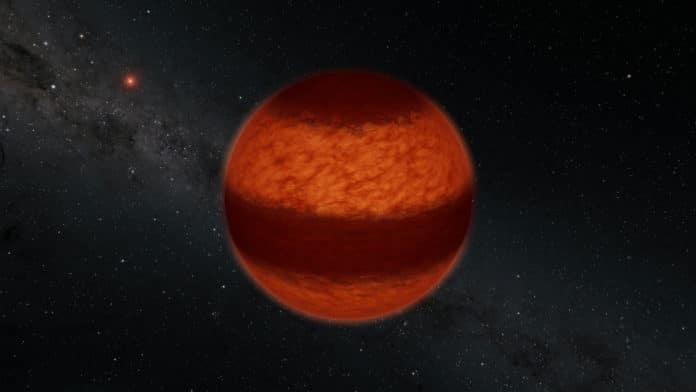Using the technique of polarimetry, a team of international astronomers has detected signs of cloud bands similar to those seen on Jupiter and Saturn on the closest known brown dwarf, Luhman 16A.
Luhman 16A is a binary brown-dwarf system, containing a second brown dwarf, Luhman 16B, that lies in the southern constellation Vela at a distance of approximately 6.5 light-years from the Sun. It is the third closest system to our Sun after Alpha Centauri and Barnard’s Star.
Despite having similar masses and temperatures, there is a remarkable difference in the weather of these brown dwarfs.
Luhman 16B does not indicate stationary cloud bands, instead of showing proof of more irregular, patchy clouds. Luhman 16B, in this manner, has recognizable brightness varieties because of its cloudy features, not at all like Luhman 16A.
Julien Girard of the Space Telescope Science Institute in Baltimore, Maryland, said, “Like Earth and Venus, these objects are twins with very different weather. It can rain things like silicates or ammonia. It’s pretty awful weather.”
Using an instrument on the Very Large Telescope in Chile, astronomers studied polarized light from the Luhman 16 system. Measuring the preferred polarization of light will help them deduce the presence of clouds without directly resolving either brown dwarf’s cloud structure.
Theodora Karalidi of the University of Central Florida in Orlando, Florida, a member of the discovery team said, “To determine what the light encountered on its way we compared observations against models with different properties: brown dwarf atmospheres with solid cloud decks, striped cloud bands, and even brown dwarfs that are oblate due to their fast rotation. We found that only models of atmospheres with cloud bands could match our observations of Luhman 16A.”
The polarimetry technique isn’t limited to brown dwarfs. It can also be applied to exoplanets orbiting distant stars. However, this is for the first time, scientists used this technique to determine the properties of atmospheric clouds outside of the solar system or exoclouds.
Journal Reference:
- Maxwell A. Millar-Blanchaer, Detection of Polarization due to Cloud Bands in the Nearby Luhman 16 Brown Dwarf Binary. DOI: 10.3847/1538-4357/ab6ef2
